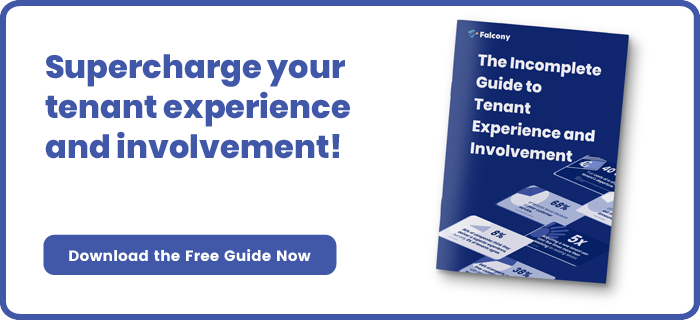9 Typical Quality Problems in Real Estate and Property Management
Real estate and property management are integral components of the housing and commercial sectors, providing housing, office space, retail outlets, and other essential facilities. However, managing real estate assets comes with various quality challenges that can affect tenant satisfaction, property value, and operational efficiency.
In this blog, we will explore nine typical quality problems encountered in real estate and property management, providing real-world examples and actionable solutions to address them effectively.
Maintenance and Repairs Delays
Example: Delayed response to maintenance requests or unresolved repair issues, leading to tenant dissatisfaction and property deterioration.
Solution: Implement a proactive maintenance program with scheduled inspections and preventive maintenance tasks, utilize property management software for maintenance tracking and work order management, establish service level agreements with maintenance contractors, and prioritize urgent repairs to minimize tenant disruptions.
Poor Tenant Communication
Example: Ineffective communication with tenants regarding lease terms, rent payments, or property-related issues, resulting in misunderstandings or disputes.
Solution: Establish clear communication channels for tenant inquiries and feedback (e.g., tenant portals), provide timely and transparent communication on lease agreements, rent increases, and property policies, assign dedicated property managers or customer service representatives for tenant interactions, and address tenant concerns promptly and professionally.
Tenant Turnover and Vacancies
Example: High turnover rates and prolonged vacancies leading to lost rental income and increased marketing and leasing costs.
Solution: Implement tenant retention strategies such as lease renewal incentives and responsive property management services, conduct market analysis to determine competitive rental rates and leasing strategies, invest in property upgrades and amenities to attract and retain tenants, and maintain proactive marketing efforts to fill vacancies quickly.
Regulatory Compliance and Property Regulations
Example: Non-compliance with building codes, zoning regulations, or housing laws, resulting in fines, legal liabilities, or property violations.
Solution: Stay updated on local, state, and federal regulations governing real estate and property management, conduct regular property inspections to ensure compliance with building and safety codes, obtain necessary permits and licenses for property operations, and engage legal and regulatory experts for guidance and compliance assistance.
Inadequate Property Security
Example: Security breaches or incidents such as vandalism, theft, or unauthorized access, compromising tenant safety and property integrity.
Solution: Implement security measures such as access control systems, surveillance cameras, and security patrols, conduct security risk assessments to identify vulnerabilities and implement appropriate security measures, provide tenant education on security protocols and emergency procedures, and collaborate with local law enforcement for crime prevention initiatives.
Deferred Maintenance and Property Deterioration
Example: Neglecting routine maintenance and capital improvements, leading to property deterioration and decreased asset value.
Solution: Develop a proactive maintenance plan with budget allocations for routine maintenance and capital improvements, prioritize maintenance tasks based on asset condition assessments and lifecycle cost analysis, conduct regular property inspections to identify maintenance needs, and invest in property upgrades to enhance curb appeal and tenant satisfaction.
Financial Mismanagement and Budget Overruns
Example: Poor budget planning, overspending, or misallocation of funds, leading to financial instability and cash flow problems.
Solution: Establish a comprehensive budgeting process with input from property managers and financial analysts, conduct regular financial reviews and variance analysis, monitor expenses and income streams using property management software or accounting systems, and implement cost-saving measures such as energy efficiency upgrades or vendor negotiations.
Tenant Disputes and Legal Proceedings
Example: Disputes between tenants and landlords over lease terms, property conditions, or rent payments, resulting in legal action or eviction proceedings.
Solution: Establish clear lease agreements with detailed terms and conditions, provide tenant orientation and education on lease obligations and property rules, address tenant concerns and grievances promptly and professionally, engage in alternative dispute resolution mechanisms (e.g., mediation or arbitration), and seek legal counsel for complex legal matters.
Lack of Property Value Enhancement Strategies
Example: Failure to maximize property value through strategic renovations, tenant improvements, or asset optimization strategies.
Solution: Conduct property valuations and market analyses to identify opportunities for value enhancement, invest in property upgrades and renovations to increase market appeal and rental income potential, implement tenant amenity programs or community events to enhance tenant experience and retention, and explore diversification strategies such as mixed-use development or adaptive reuse projects.
Conclusion
In the competitive real estate market, addressing quality problems is essential for maximizing property value, tenant satisfaction, and operational efficiency. By tackling typical challenges such as maintenance delays, poor tenant communication, turnover and vacancies, regulatory compliance, property security, maintenance, financial management, tenant disputes, and value enhancement strategies, real estate owners and property managers can enhance asset performance and achieve long-term success in the industry. Through proactive management, stakeholder engagement, and continuous improvement, real estate professionals can navigate challenges and capitalize on opportunities for sustainable growth and profitability in the ever-evolving real estate landscape.
If you're looking for a platform to collect more data to monitor your organisation's quality reporting practices, Falcony | Observe have you covered. You can find more information on our website or test out our 30-day free trial:
We are building the world's first operational involvement platform. Our mission is to make the process of finding, sharing, fixing and learning from issues and observations as easy as thinking about them and as rewarding as being remembered for them.
By doing this, we are making work more meaningful for all parties involved.
More information at falcony.io.

Related posts
How To Engage Your Contractors In Property Renovations And Why It Matters
Anyone in the world of commercial real estate is familiar with the drastic changes experienced by...
What The Customer Success Profession Can Teach Property Asset Managers
Property asset managers typically have many responsibilities that include many different...
Best Practices in Proactive Property Management for Tenant Experience
Proactive property management is the cornerstone of providing an exceptional tenant experience in...





